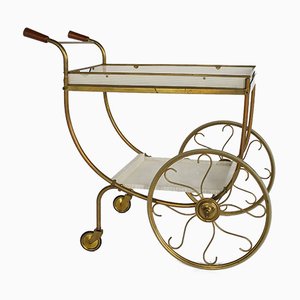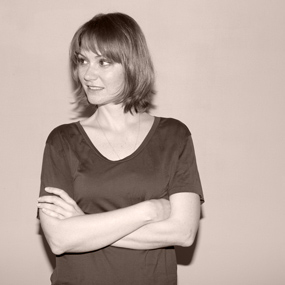Enduring design advice from moderate modernist Josef Frank
Have It Your Way
Sure, we all love midcentury modernism now. What’s not to like about deliciously tapered, brass-capped wooden legs on graceful, low-slung chairs upholstered in nubby textiles? Or the Eameses' bent plywood? Or the elegant severity of Breuer’s chromed, tubular steel? Even so, it’s worth recalling that these forms so beloved today—the defining furniture created from the 1930s to the 1960s—debuted amid an atmosphere of heated dispute. What’s more, over time, many of the fundamental principles touted by the same modernist masters to whom we owe our most cherished classics, from Le Corbusier to Ludwig Mies van der Rohe, have become increasingly irrelevant. As we re-embrace layered, eclectic, handcrafted, and highly personalized home décor, Bauhasian ideas of standardization make less and less sense.
Perhaps the real patron saint of the contemporary design aesthetic is someone more like Josef Frank. Though often overlooked by the history books, the foundational concepts of this independently minded Austrian-Swedish architect-designer still ring true, today more than ever.
“There's nothing wrong with mixing old and new, with combining different furniture styles, colors and patterns,” Frank argued. “Anything that is in your taste will automatically fuse to form an entire, relaxing environment. A home does not need to be planned down to the smallest detail or contrived; it should be an amalgamation of the things that its owner loves and feels at home with.” Funny how a perspective that was once considered so heretical can feel so natural today.
Frank was a modernist with a heart, unafraid of embellishments and heterogeneity. Born in Austria in 1885, the architect belonged to the same generation as the most prominent pioneers of modernist design, including Walter Gropius, Mies van der Rohe, and Le Corbusier. Like his contemporaries, he was passionately committed to shaping a new era, recognizing that the machine age had brought new technologies and lifestyles that must, by necessity, have an affect on the way buildings and interiors are designed. Frank played a key role in propagating the modernist movement in Vienna and beyond from the 1910s to the early 1930s, until the rise of Nazism forced him to immigrate to Sweden, where he became a life-long designer for Swedish furnishings company Svenskt Tenn, working closely with its visionary leader Estrid Ericson.
Between the two World Wars, the most ardent proponents of modernism, most notably Le Corbusier, organized a number of conferences and exhibitions, with the aim of codifying the movement into a set of standardized precepts. They were particularly concerned with rationalizing housing, in terms of both urban planning and interior design. Frank was invited to participate in these landmark debates. Although the intention was to formalize the new era of design,it was these exchanges that revealed that Frank would never be a strict modernist.
Frank disagreed most vehemently with the voices of modernism insisting that the machine age required a dogmatic, universal, functionalist program encapsulated in a new aesthetic language characterized by reduced forms, high-tech materials, and the absence of ornament. While a general consensus existed among modernists to develop a “human-centered” approach, Frank stood apart from his colleagues by arguing that architects cannot decree a fixed program that works for every person in all circumstances—especially with respect to the designing of homes. Not only would such orthodoxy be uncomfortable, Frank asserted, it would be boring.
For Frank, modern design should be simple, straightforward, and practical. He believed, however, that such modern precepts should not preclude character and comfort. He embraced personal touches, sentimentality, and asymmetry, outfitting interiors with boldly patterned upholstery, traditional furniture forms, off-grid furnishing arrangements, and motley displays of assorted decorative objects.
In 1958, Frank wrote a manifesto-like essay for Swedish magazine Form in which he gave a name to his long-held version of modernism: Accidentism. The term represents Frank’s belief that highly controlled designs are oppressive, and that the most welcoming environments are those that seem to have developed organically over time, as if by accident. The essay is worth quoting at length:
“Every human needs a certain degree of sentimentality to feel free… What we need is variety and not stereotyped monumentality. No one feels comfortable in an order that has been forced upon him, even if it has been doused in a sauce of beauty. Therefore, what I suggest are not new rules and forms but a radically different attitude toward art.” With startling prescience, Frank strikes at the totalizing, one-size-fits-all tendencies at the heart of conventional modernism: “Away with universal styles, away with the equalization of art and industry, away with the whole system that has become popular under the name functionalism.”
Within his lifetime, Frank’s more rigid contemporaries overshadowed his contribution to modernism. Today, however, he is appreciated as one of the most influential designers of the twentieth century, someone who foresaw the limits of functionalist aesthetics and ideology and led the way to a more organic, more individualized—dare we say, post modern —conceptual approach to design. This freedom in design is what we embrace most today.
Let me leave you with a final quote from Frank, one that could’ve been written yesterday and that encapsulates everything that’s so wonderfully insightful about his approach: “The home must not be a mere effective machine. It must offer comfort, rest, and coziness (soothing to the eye, stimulating to the soul). There are no puritan principles in good interior decoration.”
-
Text by
-
Wava Carpenter
After studying Design History, Wava has worn many hats in support of design culture: teaching design studies, curating exhibitions, overseeing commissions, organizing talks, writing articles—all of which informs her work now as Pamono’s Editor-in-Chief.
-
More to Love
Upholstered Cherrywood Lounge Chair and Footstool by Anna-Lülja Praun, 1950s, Set of 2
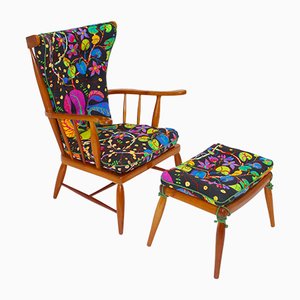
No. 752 Armchair by Josef Frank for Thonet, 1920s
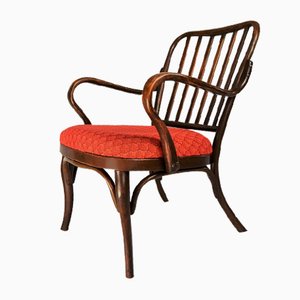
Viennese Cherrywood Stool by Anna Lülja Praun, 1950s

Swedish Bar Cart by Josef Frank for Svenskt Tenn, 1950s
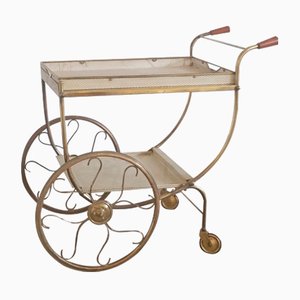
No. 752 Armchair by Josef Frank, 1930s

Vintage White Cabinet

Vintage Friendship Knot Candleholder by Josef Frank for Svenskt Tenn, 1938

Mahogany Side Table by Josef Frank for Svenskt Tenn, 1950s
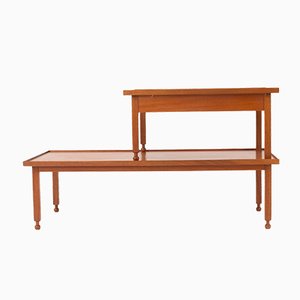
Mid-Century Brass Mirror & Wall Lamps by Josef Frank for Svenskt Tenn, Set of 3

Mahogany Desk by Josef Frank for Svenskt Tenn, 1950s

Danish Cherry Rack with Drumstick Detailing by Frits Henningsen for Andreas Tuck, 1940s

Swedish 970 Chair by Josef Frank for Svenskt Tenn, 1960s
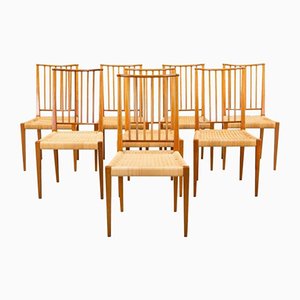
Swedish Model 974 Side Table by Josef Frank for Svenskt Tenn, 1938
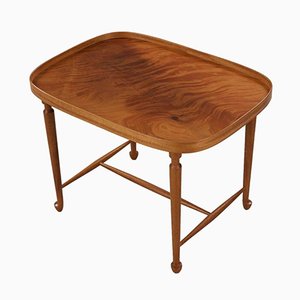
Walnut Showcase Cabinet on Stand by Josef Frank for Svenskt Tenn, 1946
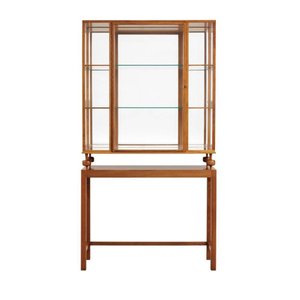
Vintage 1073 Nightstand by Josef Frank for Svenskt Tenn
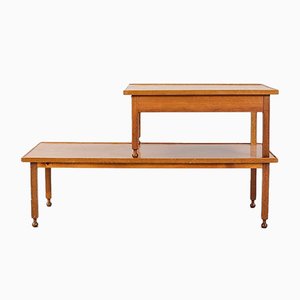
Swedish Tea Trolley by Josef Frank for Svenskt Tenn, 1950s
